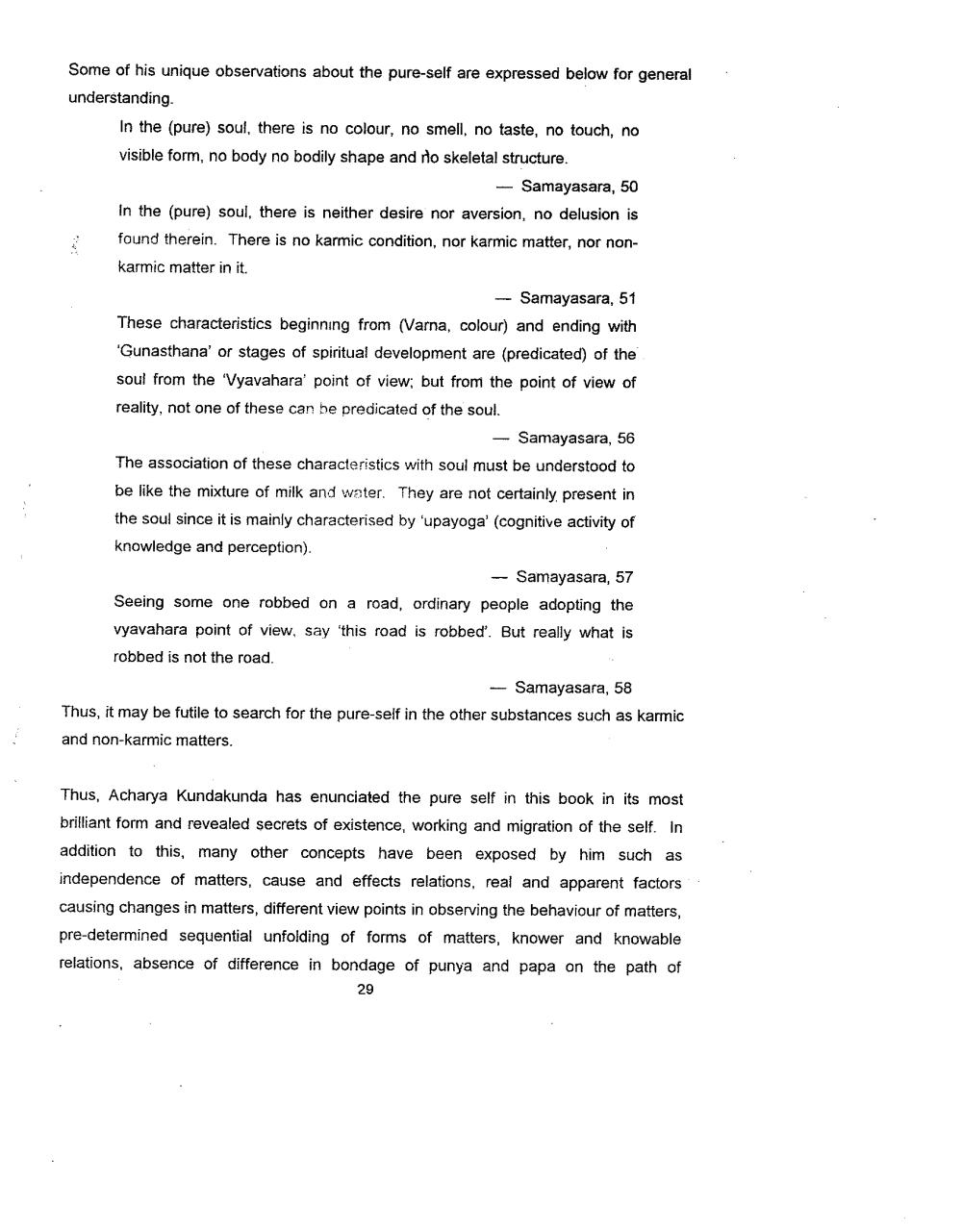________________
Some of his unique observations about the pure-self are expressed below for general understanding.
In the (pure) soul, there is no colour, no smell, no taste, no touch, no visible form, no body no bodily shape and ro skeletal structure.
- Samayasara, 50 In the (pure) soul, there is neither desire nor aversion, no delusion is found therein. There is no karmic condition, nor karmic matter, nor nonkarmic matter in it.
-- Samayasara, 51 These characteristics beginning from (Varna, colour) and ending with "Gunasthana' or stages of spiritual development are (predicated) of the soul from the 'Vyavahara' point of view; but from the point of view of reality, not one of these can be predicated of the soul.
- Samayasara, 56 The association of these characteristics with soul must be understood to be like the mixture of milk and water. They are not certainly present in the soul since it is mainly characterised by 'upayoga' (cognitive activity of knowledge and perception).
- Samayasara, 57 Seeing some one robbed on a road, ordinary people adopting the vyavahara point of view, say this road is robbed'. But really what is robbed is not the road.
- Samayasara, 58 Thus, it may be futile to search for the pure-self in the other substances such as karmic and non-karmic matters.
Thus, Acharya Kundakunda has enunciated the pure self in this book in its most brilliant form and revealed secrets of existence, working and migration of the self. In addition to this, many other concepts have been exposed by him such as independence of matters, cause and effects relations, real and apparent factors causing changes in matters, different view points in observing the behaviour of matters, pre-determined sequential unfolding of forms of matters, knower and knowable relations, absence of difference in bondage of punya and papa on the path of




